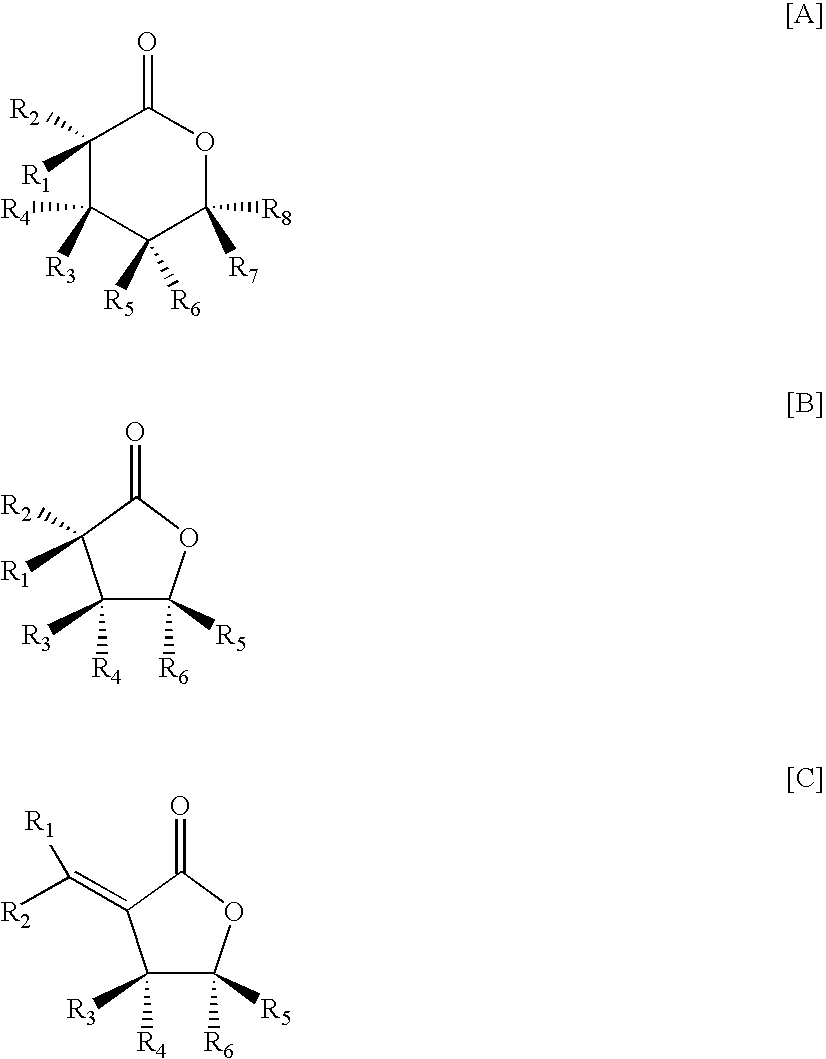1,1,1,2,2,4,5,5,5-Nonafluoro-4-(trifluoromethyl)-3- pentanone refrigerant compositions and uses thereof
a technology of trifluoromethyl and pentanone, which is applied in the field of compositions for use in refrigeration and air conditioning systems, can solve the problems of toxic, flammable, and/or low energy efficiency of replacements, and achieve the effects of low energy efficiency, toxic replacements, and low energy efficiency
- Summary
- Abstract
- Description
- Claims
- Application Information
AI Technical Summary
Benefits of technology
Problems solved by technology
Method used
Image
Examples
example 1
Impact of Vapor Leakage
[0157] A vessel is charged with an initial composition at a specified temperature, and the initial vapor pressure of the composition is measured. The composition is allowed to leak from the vessel, while the temperature is held constant, until 50 weight percent of the initial composition is removed, at which time the vapor pressure of the composition remaining in the vessel is measured. The results are summarized in Table 5 below.
TABLE 5After 50%After 50%CompoundsInitialInitialLeakLeakDeltawt % A / wt % BPsiakPaPsiakPaP %PEIK / CF3CF2SCF2CF3 (50.0° C.) 0 / 10022.71156.5822.71156.580.0% 1 / 9922.65156.1722.64156.100.0%20 / 8021.44147.8221.16145.891.3%40 / 6020.06138.3119.59135.072.3%60 / 4018.57128.0418.04124.382.9%80 / 2016.96116.9416.57114.252.3%99 / 1 15.32105.6315.29105.420.2%100 / 0 15.23105.0115.23105.010.0%PEIK / N(CH3)2(CHF2) (38.1° C.)70.2 / 29.814.68101.2214.68101.220.0%90 / 1013.7694.8712.6086.878.4%91 / 9 13.6093.7712.3184.879.5%92 / 8 13.4092.3912.0182.8110.4%100 / 0 9.9268.40...
example 2
Tip Speed to Develop Pressure
[0159] Tip speed can be estimated by making some fundamental relationships for refrigeration equipment that use centrifugal compressors. The torque an impeller ideally imparts to a gas is defined as
T=m*(v2*r2−v1*r1) Equation 1
where [0160] T=torque, N*m [0161] m=mass rate of flow, kg / s [0162] v2=tangential velocity of refrigerant leaving impeller (tip speed), m / s [0163] r2=radius of exit impeller, m [0164] v1=tangential velocity of refrigerant entering impeller, m / s [0165] r1=radius of inlet of impeller, m
[0166] Assuming the refrigerant enters the impeller in an essentially radial direction, the tangential component of the velocity v1=0, therefore
T=m*v2*r2 Equation 2
[0167] The power required at the shaft is the product of the torque and the rotative speed
P=T*w Equation 3
where [0168] P=power, W [0169] w=rotative speed, rez / s therefore,
P=T*w=m*v2*r2*w Equation 4
[0170] At low refrigerant flow rates, the tip speed of the impeller and the tange...
example 3
Performance Data
[0178] Table 7 shows the performance of various refrigerants compared to CFC-113. The data are based on the following conditions.
Evaporator temperature 40.0° F. (4.4° C.)Condenser temperature110.0° F. (43.3° C.)Subcool temperature 10.0° F. (5.5° C.)Return gas temperature 75.0° F. (23.8° C.)Compressor efficiency is70%
[0179]
TABLE 7ComprComprEvapEvapCondCondDischDischRefrigerantwt %PresPresPresPresTempTempCapacityCapacitycompositionPEIKwt % B(Psia)(kPa)(Psia)(kPa)(F.)(C.)COP(Btu / min)(kW)CFC-1132.71912.888156.369.14.1814.80.26PEIK plus (B):1,1-dichloroethane78.721.33.52417.4120141.360.73.9721.20.37t-DCE72.028.04.43021.6149150.465.83.9926.80.47acetone50.050.03.62518.4127137.158.43.9421.90.38diisopropyl ether85.314.63.22216.3112127.352.93.7318.10.32dimethoxyethane92.67.42.81915.1104128.253.43.816.80.29dimethoxymethane79.520.54.53122.7156139.059.43.8626.60.47dimethyl acetal85.514.52.71814.197131.955.53.8916.30.29ethanol96.83.22.41713.895131.255.13.8715.40.27ethyl formate...
PUM
| Property | Measurement | Unit |
|---|---|---|
| Temperature | aaaaa | aaaaa |
| Temperature | aaaaa | aaaaa |
| Temperature | aaaaa | aaaaa |
Abstract
Description
Claims
Application Information
 Login to View More
Login to View More - R&D
- Intellectual Property
- Life Sciences
- Materials
- Tech Scout
- Unparalleled Data Quality
- Higher Quality Content
- 60% Fewer Hallucinations
Browse by: Latest US Patents, China's latest patents, Technical Efficacy Thesaurus, Application Domain, Technology Topic, Popular Technical Reports.
© 2025 PatSnap. All rights reserved.Legal|Privacy policy|Modern Slavery Act Transparency Statement|Sitemap|About US| Contact US: help@patsnap.com



